Payment for the heat: why the price for heating in Kazan constantly increases
The new heating season is about to start in Kazan. This means that soon the utilities invoice will again increase for residents because the heating accounts for major part of the bill amount in the cold season. Realnoe Vremya decided to find out how the prices for heating are formed for the residents of Kazan. About why the population has to pay huge sums for heating, how and why the heat today has become a luxurious necessity, whether it is possible to reduce the tariff size and what to do for it – read in the material of our newspaper.
Tatarstan citizens pay up to 70% of the total bill amount for heating in the cold season
Since the beginning of July, the charge for housing and utilities has increased in Russia again. Tatarstan in this sense is no exception: in accordance with the decree of the president of the Republic of Tatarstan, the marginal growth index of payment for utilities in average for Kazan is to be no more than 4,2 %. According to preliminary data, the average cost of utilities in the second half of 2017 will increase by 3,1% (up to 3,551 rubles). What is more, Tatarstan citizens have to pay up to 70% of the total amount for heating in the cold season. Noteworthy, the heating season in Russia lasts up to 250 days, which is about eight months a year.
As for the capital of Tatarstan, according to averaged data, the heating charge in the second half of 2017 in Kazan will increase by 3% (the indicator is calculated on a fixed average tariff of the largest heat suppliers). At the same time, the growth of heat tariffs for the population, designated for various heat-supplying organizations, has different growth dynamics and ranges from 1% to 4%. In the region, the heat tariff is defined by the State Committee of Tatarstan on tariffs.
Heating tariff can be changed once a year from 1 July
In order to understand why heat tariffs are so high for the population, let's look at how they are formed. The cost for heating is generated in several stages. First, the heat supplying organization, producing or supplying the heat, on the basis of applications and concluded contracts for the supply of heat determines and justifies in the form of an application its tariff for heat supply services for consumers. In the application for tariff, the supplier takes into account all costs that it plans to spend on production, transporting and realization of the heat for the consumer. It is obvious that the costs for fuel, which in the structure of the tariff for heat production account for more than 80%, account for major part in the structure of the final tariff for the population. Besides, the cost estimate for the final tariff includes the salaries of personnel, costs for repair of equipment and heat networks, the provision with cold water, electricity to produce heat and pump drive for its transporting, the expenditures for chemical agents for water treatment, the costs of heat energy losses during transportation, heat distribution costs. Based on these data and the data on the expected volume of heat to the consumers, the heat supply organization calculates the cost of a Giga-calorie of heat energy.
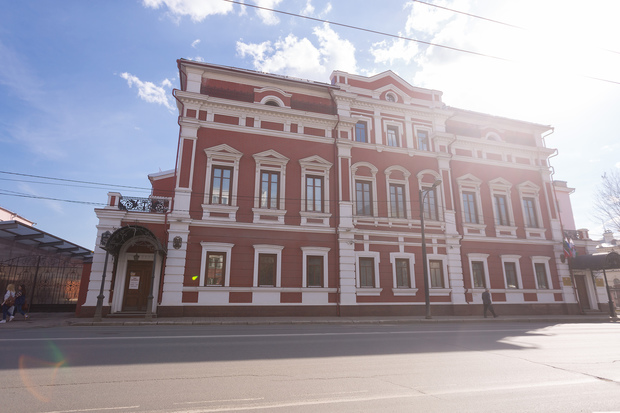
After that, the company submits a request for the tariff to the Tatarstan State Committee on tariffs, which, in its turn, checks the calculation and defines the rate for each heat supply organization, depending on the type of its activity: the tariff for heat production, tariff for heat transportation and the final tariff for the heat supply to the consumer, including for the population. According to the information provided by the press service of Tatarstan State Committee on tariffs, their calculation of the heat tariff for consumers takes into account the production costs (purchase of heat energy), the costs of transfer of thermal energy through heat networks, and also distribution costs of an organization engaged in the supply of heat energy. The main document of the legislation in this sphere is the Federal Law No. 190 ''On heat supply'', the decree of the government of the Russian Federation ''On pricing in heating sector'' as of 22/10/2012 No. 1075, the methodical instructions on calculation of regulated prices in the heat supply sector.
The heating tariffs are set for a year, it is possible to establish long-term tariffs. According to the Tatarstan State Committee on tariffs, an increase (a tariff change) is provided no more than once a year. The tariff amount is changed annually on 1 July. As key factor for a growth the ministry calls inflation, a rising cost of regulated services and an increase in price for energy resources, i.e. fuel, electricity. As fuel the heat sources of Kazan mainly use natural gas, but power plants also have emergency fuel: mazut — at Kazan CHPP-1 and CHPP-3, and coal — at Kazan CHPP-2. Considering the annual growth of fuel prices, it turns out that in this sense a growth of tariffs is inevitable. However, industry experts believe that the amount of increase can be reduced.
''As an institution exercising public control in this sphere, we are concerned about two important points,'' said executive secretary of the inter-sectoral consumer council on the issues of activities of natural monopolies under the president of Tatarstan Timur Khalikov. First, according to him, regular indexation for heat is defined by the federal normative legal acts. And there's nothing you can do about it. Second, the tariff for heat has a component — the costs for production and heat delivery. In this part, the work is conducted regularly. Every opportunity is used to reduce certain costs.
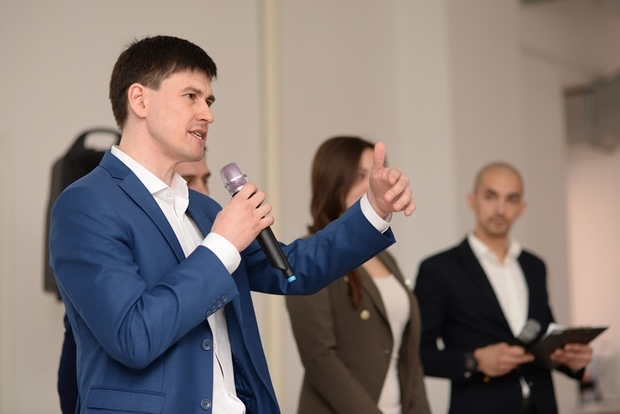
''For example, if an organization was going to spend money on one thing but spent on another, it immediately raises the question that these costs should be excluded from the tariff next time. Or a company used the funds not as intended. This applies to all existing heating supply organizations in the region. We cannot say that it is a great reserve. But such mechanism for reducing tariff is being used,'' says Khalikov.
Experts say that in the formation of tariffs for the population, the heat supplying organizations have several ways of its overstatement, in addition to designated by Timur Khalikov. One of the main ways of tariff increase is an overstatement of normative losses of heat during its transportation, since the volume of ''normative losses'' is included in the final tariff at full price. Currently, the average level of losses included in the tariff for the population of Kazan is 21 %, for some heat-conducting paths of the city it is accepted the loss level of 30%. This means that the end consumer pays, in fact, for a greater volume of heat by 20-30% than actually consumed. It is difficult for the regulator to check the actual level of losses, and it is easier to accept them on the basis of the results approved by expert organisations standards of losses. Although it is well known that the heat losses of pipelines with so-called insulated PPU (polyurethane) make up 5-6%, and, for example in Kazan, in the last 10 years almost all main heating pipes were replaced by pipelines with PU foam insulation. Another way to increase the tariff is to overestimate the cost for fuel. To do it, the costs for production of heat from boiler houses are often hidden from the population inside the final tariff. The thing is, according to the Federal Law ''On heat supply'' the priority should be given to the release of heat from sources with combined generation of thermal and electric energy as the cost of heat from them is lower and it is cheaper for the population. Respectively, in the presence of capacity reserves at CHP, the use in the system of heat supply of the heat from expensive boiler houses is, to put it mildly, illegitimate. In this case, very often the cost of heat production from boiler is hidden in shipping costs or just included the final tariff for the consumer, including for the population, while a separate tariff for heat for the boiler house in this case is simply not designated and they are not seen. In the end, it often happens that the final tariff for heat for the population, which in simplified form should only include the tariff for production and the costs for maintenance of heating networks in working condition, the cost of pumping water through them, given the excessive losses and hidden costs and expensive heat from boiler houses, becomes higher than the tariff for production several times.
Kazan heat market is divided among three companies
In Kazan, the situation with heat supply organizations is the following. On the market there are only a few major heat producers producing and supplying heat for the population. It is Tatenergo JSC, TGС-16 JSC, Kazenergo JSC. Other producers represent the so-called small generation. It is the enterprises with their own heating sources, which sell a small amount of excess heat to the population. The market size of the small generation is small, so let's look at the situation with main suppliers. Tatenergo is the largest unified heat supply entity (ETO-1) for Kazan. In fact, the company provides heat to the entire city except the area of ETO-2, where the unified heat supply organization is TGC-16 JSC. There are also departmental boiler houses and boiler houses of Kazenergo. Kazenergo, in fact, has no centralized heating system, and each its boiler house has a specific local heating supply system.
Experts say about the long-standing need to change the heat supply scheme
Another key document for calculation of tariffs for heat, along with the above mentioned, is the scheme of the heat supply of the city, as at present, according to the legislation, it determines the loading and the delivery volume of heat energy to consumers from the heat sources. It is obvious that the delivery volume directly impacts the selling tariff of the heat source and the end tariff for the population. In Kazan, the heat supply scheme was developed and adopted in 2015. In accordance with the Federal Law No. 190 ''On heat supply'', the priority for distribution of loads among the heat sources in the scheme should be given to the sources with combined generation of heat and electric energy and with the lowest specific cost for heat production. In simple terms, the heat sources with the lowest tariff. However, those distribution of the heat loads, which is reflected in the scheme of the heat supply in Kazan, still causes heated debates among key market participants. The main point at issue of the approved scheme — imbalances in the part of the load of the heat sources with the higher tariffs at the expense of reducing the purchased volumes of heat for heating purposes for consumers, including the population, from cheaper sources. The differences have already been led the parties —Tatenergo JSC and TGC-16 JSC — to the Office of the Federal Antimonopoly Service in Tatarstan. At stake — the size of the end tariff for heating for the population. All the subjects of the heat market note that it has long overdue time to change the scheme of the heat supply of Kazan. ''Already last year we raised the question that it was necessary to revise the scheme of heat supply of Kazan. The whole system is updated regularly, it is changing. The more we continue to delay the revision process, the worse it will affect the tariffs,'' says Timur Khalikov. The words by Ildar Khalikov were confirmed by the statistics.
Let's consider the peculiar rating of the tariffs set by the Committee on tariffs of Tatarstan to the final consumer, including to the population, in Kazan. The committee for tariffs determined the largest amount in the second half of 2017 to be paid by the residents who receive heating by the company Kazenergo JSC, its tariff is 1678,77 rubles with VAT for a Gcal with an increase of 4% compared to the first half of the year. The second most expensive —Tatenergo JSC with the tariff at 1626,81 rubles with VAT with a similar increase of 4%. That is, the rate of Tatenergo JSC, as a manufacturer of heat at the combined cycle power plants, is less than the rate of Kazenergo (where there are only boiler houses) by only 3%.
The lowest tariff for residents has been determined at TGC-16, in the second half of 2017 it amounted to 1425,65 rubles, including VAT, it grew by only 1,1%. It is the tariff the inhabitants of the residential district Salavat Kupere pay for the heat. Given the fact that under the supervision of Kazenergo there are only boiler houses, the established for it the most expensive tariff seems to be logical. However, in our situation, the curiosity raises the tariffs of the company Tatenergo. The gap between the rate of boiler houses of Kazenergo JSC and the rate of Tatenergo JSC, which supplies heat from sources with combined generation — the own Kazan CHPP-1 and 2 and Kazan CHPP-3 (owned by TGC-16 JSC), differs from the rate of boilers by symbolic 51 rubles 96 kopeks. The reason for this minimal difference in rates becomes obvious if we consider the structure of heat supply to the population of Tatenergo JSC and the ratio of tariffs at different heat supply sources, from which the supply of heat goes to the population. As we have already mentioned, at the moment Tatenergo JSC supplies the heat to the population from three sources — CHPPs, but, in addition to them as sources of heat supply there are three powerful district heating plants — Azino, Gorki, Savinovo.
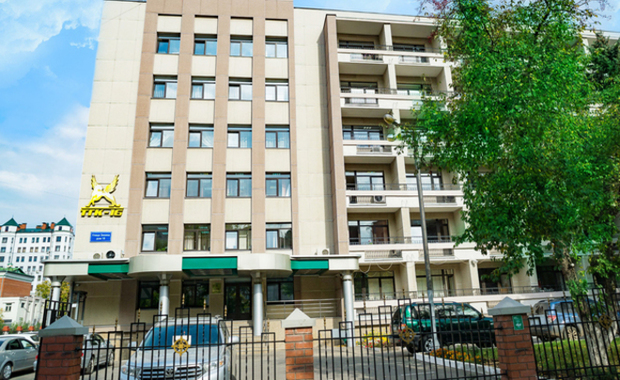
The quantity of delivered heat from these boiler houses to the population is almost equal to the amount of heat supply from Tatenergo CHP and far exceeds the volume of delivery of heat from Kazan CHP-3, owned by TGC-16 JSC. It turns out that because of a huge share of the amount of heat transfer from the boiler in the structure of heat of Tatenergo, the tariff for the end user just soars to the level of Kazenergo. But the most interesting thing is that if before 2017 the boilers were present in the tariffs for heat production for Kazan CHPP-1 and CHPP-2, as they are the administrative part of these stations, then from 2017 they miraculously ''vanished'' from the tariff of these stations and seemingly have been ''hidden'' in the final tariff for the population. It seems that this is done in order not to give competitors on the market, read — TGC-16, once again to draw attention to the high tariff of boiler houses in the structure of the final tariff, but it doesn't change anything. Just the tariff for the population has increased again. It is also not so simple with the rate of transporting of heat through the central heating system of Kazan. From the moment when the thermal networks of Kazan became a structural subdivision of Tatenergo JSC (JSC Kazan Heating Grid Company leased its thermal networks to the branch of Generation Company JSC – the Kazan Heating Networks, which has become a branch of Tatenergo JSC), the tariff of transfer in the heat networks in Kazan also miraculously ''disappeared'' and is no longer set. In fact, the user now sees only the rate for production and the final tariff and cannot understand what it contains. Here's an interesting effect from the previously announced loud emerge of the energy enterprises under the auspices of the Tatenergo – it has been formed a completely nontransparent pot with continuously growing rates. We used the information provided on the website of the State Committee on tariffs in 2012 in the part of the tariffs for the population of the city of Kazan, the tariffs of the heat sources (Kazan CHPP 1, 2, 3 and the district boiler houses of Tatenergo JSC) and set them up in a simple chart. The tariffs for each 6 months vary greatly, so we brought their average for a year value, the boilers are included in the tariffs of KCHPP-1 and KCHPP-2. The results surprised us. It is seen that the rates at the Kazan CHPP-3 from 2012 are in average lower than the rates of Kazan CHPP-1, 2 and the boiler houses by 40-50%.
At the same time, for unknown reasons, every year there is a decrease in the purchase of heat energy from the cheaper source of heat — KCHPP-3. From 2012 to 2016, the purchase of cheap thermal energy from Kazan CHPP-3 fell twofold, at the same time the final tariff for the population grew by 25%, while the share of district heating plants in the structure of Tatenergo supply has not fallen already for many years.
The graph illustrates the dynamics of growth of tariffs for the population of Kazan, with obvious direct correlation: the less the volume of purchases of cheap heat from the heat source Kazan CHPP-3 is, the higher tariffs for the population of Kazan are. Separately it is worth noting almost twofold difference between the tariffs for heat production at the source and the end tariff for the population.
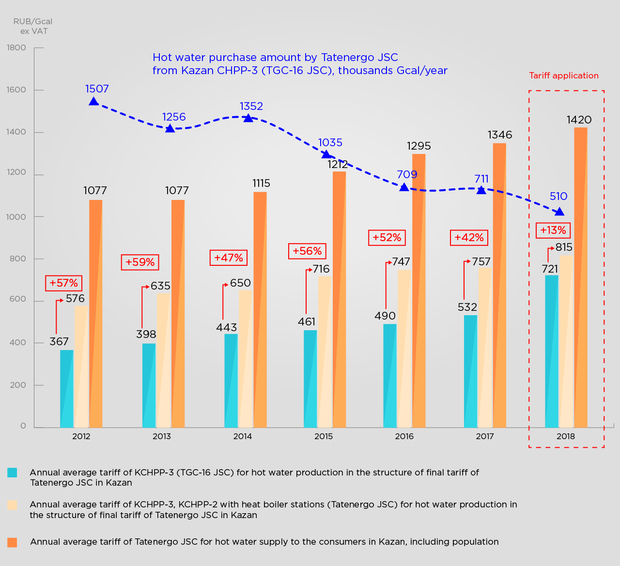
''I believe that today the heating tariffs in Tatarstan are very high,'' believes chairman of the Union of house committees, the honoured power engineer of the Republic of Tatarstan, Gennady Somov. ''The winter is coming, and there again will be complaints that the invoice amounts for exactly half of the pension. There is no doubt in it because the whole last winter they were complaining on high tariffs for heating.''
''Tariffs for production of thermal energy for the population can be reduced by increasing the load of the sources with combined generation of heat and power with low tariffs,'' says the head of the production department of TGC-16 Sergey Sergeyev. At the same time, the increase in the download of such heat sources due to the boilers will also allow to produce additional electricity, and the tariff for heat, of course, will also decrease.'' All this can be seen in the diagram. We prepared it in order to simply and clearly show and explain the advantage of effective loading of the heat sources with low tariffs, which is Kazan CHPP-3.
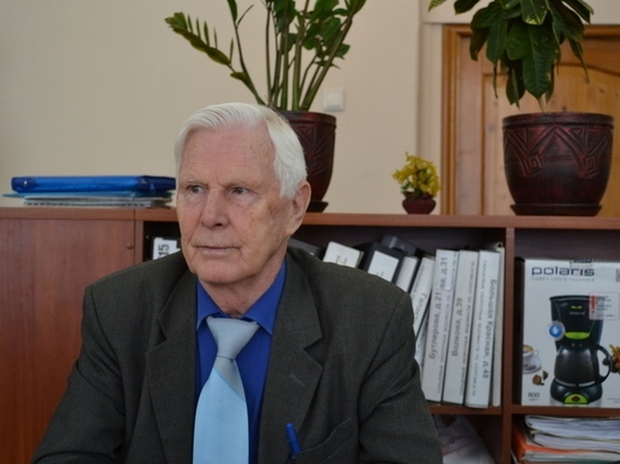
The diagram shows how the tariff for heat can be reduced for heating from KCHPP-3 when increasing the volume of its purchases from Tatenergo JSC. At the same time, it is seen that the average annual rate of KCHPP-3 is 721 RUB/Gcal, generated taking into account the minimum application of Tatenergo for the purchase of heat from of KCHPP-3 in 2018 in the amount of 510,000 Gcal, is below the average annual rate of KCHPP-1, 2 in accordance with the tariff application of Tatenergo.
''This picture has nothing surprising,'' said Sergeyev. ''Just in the structure of heat production at KCHPP-1 and KCHPP-2, more than 90% account for the production of heat for heating, including a large amount of heat is released from the boiler, we have year-round heat consumption in the pair of different parameters by large industrial consumer in the face of Kazanorgsintez JSC, and the share of heat supply in hot water is not more than 47%, out of which in the network Tatenergo there go not more than 23%, we do not produce the heat at hot water boilers in principle, given all this and the huge work on modernization of the main operating equipment, which was conducted at KCHPP-3, we're just doomed to be more effective and cheaper than of KCHPP 1, 2 with their district boilers Savinovo, Azino, and Gorki.
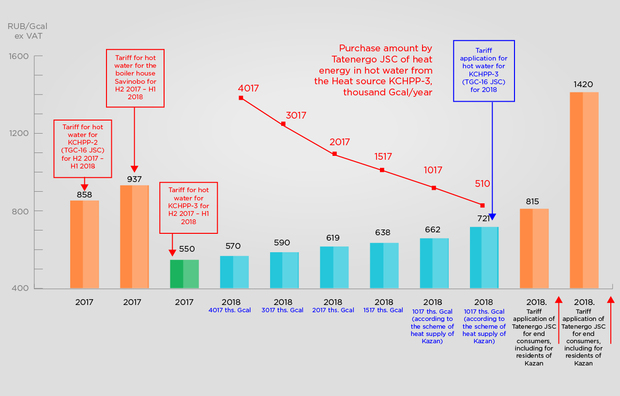
It would seem that if there is a supplier who is willing to reduce prices, it can become a reasonable solution to the problem of limiting the growth of tariffs for the population. But it's not all that simple. Tatenergo JSC insists that a decline in purchases of cheap thermal energy from Kazan CHPP-3 is an objective fact, and it is associated either with large losses in heat networks of Tatenergo upon the transfer, or the restrictions in the hydraulic regimes of the network. TGC-16 specialists state that, for example, already in 2016 Tatenergo JSC managed to reduce the heat tariff for the population, purchasing heat from of KCHPP-3 in large amounts at the average rate of 490 RUB/Gcal instead of purchasing from the own CHP plants and boilers at the rate of 747 RUB/Gcal. The amount of saving is calculated in a simple way: the difference in rates of heat sources multiplied by the purchase volume. Taking an additional 500,000 Gcal, it means people pay less by 129 million rubles, if taking 1 million Gcal — the population will pay less by 257 million rubles.
It is also easily possible to assess the effect from saving in payments of the population when reducing laid down in the rate losses for heat transporting: Tatenergo JSC has laid the amount of losses at 1,290 thousand Gcal in the final tariff for the population. The reduction of losses in transporting from only 21% to 16% will lead to savings in consumer charges in the amount of 323,000 Gcal a year, or 233 million rubles a year. It turns out that, according to conservative estimates, the reserve for reducing payments for consumers, including the population, in Kazan is about half a billion rubles a year.
The arguments of TGC-16 are logical, believes Gennady Somov. ''You see, there are no intermediates. The heat networks are owned by Tatenergo. The money go directly, therefore, the tariff for the population can be reduced,'' explains the honoured power engineer of the Republic of Tatarstan. According to the Tatarstan Ministry of Construction, the debt for heat energy to Tatenergo for a year increased by 36 million rubles compared to the same period last year and amounted 620 million rubles as of 1 July 2017. The figures are not surprising, given the fact that the average pension in the country at the beginning of the year amounted to 12,400 rubles, the average wage in Tatarstan reached 28,676 rubles. The high tariffs on heating as a heavy financial burden lie on the citizens of Kazan, especially the socially vulnerable part of the population. One cannot disagree that it's hard to give a half a monthly income for heating in the apartment, when it is not enough for basic necessities or drugs. Especially if to take into account that there are a huge amount of budget institutions, including schools, kindergartens, hospitals. And in this case it turns out that the budget of the region is forced to pay unnecessarily high heating costs of budgetary institutions at the expense of purchasing students books, equipment for hospitals and clinics and many more useful things, with which it would be possible to strengthen the material-technical base and to improve the quality of service, education, treatment of the citizens of Kazan.
Kazan overpaid 10,5 billion rubles for heating over 9 years
''The Kazan citizens have overpaid for heating 10,5 billion rubles over nine years,'' says the honoured power engineer of RT Gennady Somov. According to him, all three major stations of Kazan are connected with each other by heat conducting paths. So the heat runs from one CHP to another. Through heat pipes it is possible to supply the required amount of cheap heat and at the same time to provide thermal reserve for emergency situations.
According to the information of Realnoe Vremya, the problem is being exacerbated by the fact that Tatenergo decided to decommission one of the heat pipes linking of KCHPP-3 and areas of the city. If this happens, then the link between the station and the city will remain only one heat supply main No. 14. For example, in case of an accident, residents will have to freeze in their own apartments. ''It is a great danger,'' commented Gennady Somov. ''It is impossible to dismantle in any case. All need to support each other. In the event of an accident the consequences will be catastrophic. Who knows, God forbid, the winter will be like in 1978. It was terrible. You come in the turbine hall — and see nothing. There was a white shroud due to evaporation.''
Salavat Kupere pays for the heat least of all in Kazan
In fact, today the cheapest tariff for heating in Kazan is set for residents of Salavat Kupere residential complex, the rate per Gcal in the second half of 2017 was 1425,65 rubles including VAT and has gown this year by only 1,1%. This residential area is entirely powered from the source of KCHPP-3. Since the heat supply in the residential complex (in 2015), the heating tariff is lower here than in the city. For comparison, the price of heat of TGC-16 for residents of Salavat Kupere in the first half of 2017 was by 10% lower than that of Tatenergo, and by 13% than of Kazenergo. In the second half of 2017, the tariff of TGC-16 was lower by 12% and 15%, respectively. ''This difference is primarily associated with lower tariff of the heat source KCHPP-3,'' says Deputy Director General for economy of RSK PLC Bulat Sabirov.
The company RSK was specially designed to carry out the construction of heating networks in Salavat Kupere and subsequently engaged in the transportation and distribution of those amounts of heat, produced by CHPP-3, including for the residential area Salavat Kupere. The main idea of the construction project of heating networks for the residential complex is to show that the scheme of construction of heat network infrastructure without additional burden on the population is possible. Only by optimizing the cost of construction and due to the presence of a source of cheap heat. It should be noted that the example was successful, although implemented in conditions of severe limitations. The target tariff was not supposed to be higher than the tariff, there was no possibility to ''distribute'' the cost of heat distribution on other consumers. Besides, not all consumers have connected yet. The length of the newly constructed for two years thermal networks of RSK PLC is 25,7 kilometers, it cost more than 330 million rubles.
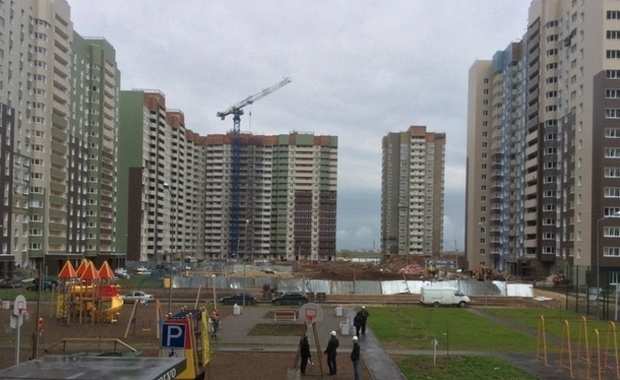
Of course, it doesn't mean that everything runs smoothly, but utility bills for heating for the population in Salavat Kupere speak for themselves. ''We need to say that our situation, as a heating company, is more complicated from an economic perspective than other heat supply companies in Kazan,'' Realnoe Vremya's interlocutor continues. According to Sabirov, it happens because the construction of houses in Salavat Kupere falls behind schedule. Today only 8 of 22 planned dwellings were housed. Consequently, now the planned energy consumption volume is not present now, while the network was built on the basis of Salavat Kupere's complete use. ''The heating system company's revenue consists of the tariff calculation that is set by the regulator and the volume of heat energy consumption,'' Bulat Sabirov explains. ''A small heating load presupposes a small revenue. In addition, the company has constant costs like salary for the personnel, expenditures, leasing, etc.''
Bulat Sabirov told that the current heat transportation tariff now doesn't cover exploitation costs that the company has: ''Because we use all the heating supply system infrastructure of Salavat Kupere that was built without depending on whether the construction of a house that will be connected to it has ended. In general, we expect it will be easier next year because the rest of the housing fund is to be put into operation.'' ''But, anyway, there are certain benchmarks that officials of the State Housing Fund under the Tatarstan President set us at the very beginning of the residential complex's construction project. And we will act in accordance with these benchmarks,'' Bulat Sabirov stressed.
Less than a month left until the new heating season. And the situation with both heating lines and heat supply are still in the air. We can only guess what a new season citizens of Kazan will have and how much the tariffs will rise in price in the second half of 2018. In addition, Kazan is also considered as a pilot zone for a new pricing method in heating – alternative boiler method. There are many questions. But we can just complain about competent decisions of officials in the republic and energy sectors. Realnoe Vremya continues following the development of the situation in the sector.